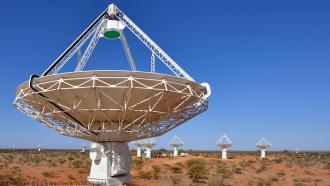
Human activities like the destruction of natural habitats for agriculture and construction, and hunting of wild species cause a significant loss to biodiversity all over the globe. However, we do not yet know which regions are facing most of the heat and which could provide refuge to the vulnerable species. In a recent study, researchers from the USA, Australia and Canada have identified some of the ‘hotspots’ and ‘coolspots’ of human activities in the world and analysed the impact of these activities on threatened and near-threatened wildlife. The findings of the study were published in the journal PLoS Biology.
The researchers studied the habitats of 5,457 species of terrestrial birds, mammals and amphibians across the globe, and mapped the threats to these species from human activities. They identified ‘hotspots’, where human activities have threatened biodiversity, and ‘coolspots’ that act as refuges from these threats.
The study found that 84% of the Earth’s surface has been affected by anthropogenic activities, and a quarter of all species face the impacts in more than 90% of their habitats. The habitats of 395 species are totally affected by these activities. If this trend continues, these species may soon face extinction, the study warns. “The top five countries most impacted by anthropogenic threats to species are all found in Southeast Asia”, say the researchers, adding that the intensity of disturbance is not uniform across the globe.
Mangroves are the most impacted biomes due to human activities, followed by biodiversity-rich tropical forests. “The tropical and subtropical moist broadleaf forests in Southeast Brazil, Malaysia, and Indonesia are the second most impacted biome, followed by the tropical and subtropical dry broadleaf forests in India, Myanmar, and Thailand”, says the study.
On the positive side, almost the entire Earth’s surface hosts at least one unimpacted species, providing refuge to that species, the study found. In fact, impacted and unimpacted species co-occur across 80% of the Earth’s surface. Interestingly, South East Asia, which is rich in biodiversity, is also a dominant coolspot. “In species-rich areas, it is logical that many species will be impacted, whilst many others remain unimpacted”, say the authors, explaining this contradiction. Some of the other coolspots are Liberia in West Africa, the Amazon rainforest and Andes mountains in South America, and the Eastern Himalayan biodiversity hotspot in Nepal, Bhutan, and Myanmar.
In India, the pine forests found along the northeastern states and Myanmar, the moist deciduous forests and montane rain forests of the southern Western Ghats and the Himalayan subtropical broadleaf forests showed a high prevalence of impacted species. Population density, roads and croplands are some of the biggest threats to biodiversity in the country.
The researchers hope that the hotspots and coolspots identified in the study would provide essential information for planning conservation measures.
“Hundreds of species, including many of the most charismatic large mammals have no refuge from human impacts. The survival of these species, and many more, hinges on humanity’s ability and willingness to compromise and share space,” they conclude.






